How To Create A Brand Identity Best Tools and Tips for Your Business
It takes time for a brand to develop a strong identity. Creating a logo isn’t just about picking out a few colors. Taking a strategic approach to your brand identity design is crucial. This requires deep thinking, a team with strong communication and design skills, and an intimate understanding of your brand.
Even though you may feel intimidated by this, it’s not that difficult. You can move through the process effectively and create a truly successful brand identity with the right guidance. The good news is that we can provide guidance.
You’ll find all you need to know about creating a brand identity, as well as our finest tips, tools and brand strategy for doing so, right here.
What Is A Brand?
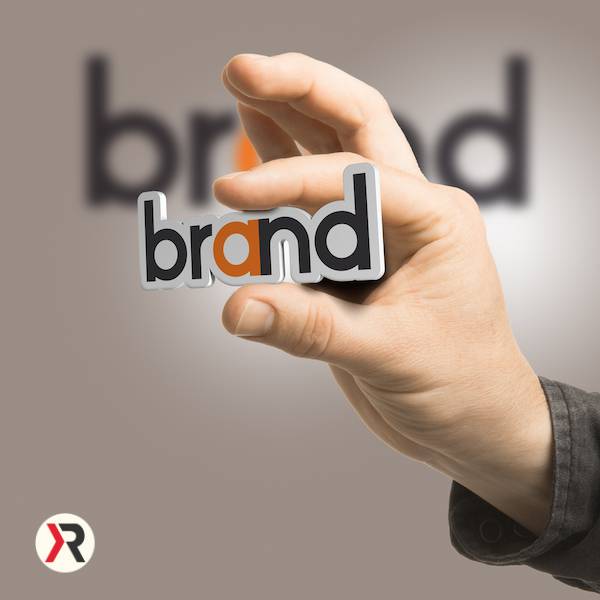
Your brand is your reputation! Your brand is simply the way a customer perceives your business. Bezos, the founder of Amazon, says it even better:
“Your brand is what other people say about you when you’re not there.”
A successful brand in today’s market must be consistent in its communication and experience across several applications:
- Environment (office or storefront)
- Print collateral, signage, labelling (of package)
- Advertising on the internet and the web
- Publication of content
What Is A Brand Identity?
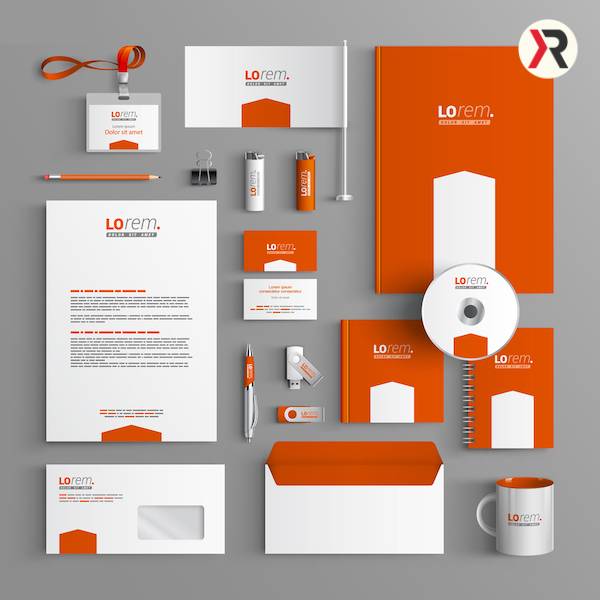
Could it be your logo? Colour palette? How do you present your infographics? It’s all of those things and more.
According to expert branding professionals, brand identity is
“the outward expression of a brand, including its trademark, name, communications, and visual identity or appearance.”
To us, a brand identity is a way your brand looks, feels, and acts. Brand identities are a way to communicate with the world, differentiate yourself from your competitors, and create a brand experience that encourages engagement.
Some brands elevate brand identity to an art form. Some brands make it their entry point into the market. Sadly, some brands struggle by failing to identify their brand identity or communicate it effectively.
Regardless of where you fall on that spectrum, one thing is certain. You must create a strong brand identity if you want to be a competitive and successful business. Having the ability to communicate who you are effective helps you build strong relationships and establish long-term success.
The 8-Step Branding Process
There is a lot more to a brand than a pretty logo. If you want to gain loyal customers, you should create a story that reflects the quality and character of your organization or product. Once you tell your story consistently across all channels and back it up with exceptional customer service, you gain all the benefits (and profits) that come with being a trusted name in the marketplace.
As a brand, you want people to hold those opinions aligned with the beliefs and values you want them to hold.
Following these steps will help you with brand development:
- Determine your branding and if your brand will be the only one in your company or one of the numerous brands in your organization.
- Learn everything you can about your product and the market it will be competing in.
- Defining what makes your brand distinctive, as well as how it will fit into an available market and in the thoughts of your customers.
- Define your brand by stating what it stands for, what distinct feature it offers, the value it promises to deliver, and the image that will permeate everything from your marketing communications to your product design, business character, and customer experience.
- Create your brand identity, including your company name, logo, slogan, and other brand signature elements.
- Launch your brand internally first and then publicly announce it via social-media advertising, endorsements, and presentations.
- Understand and leverage your brand’s value, protect it through brand guidelines and legal rights, and offer an unfailingly consistent and pleasant brand experience that builds allegiance among people who represent, choose, and remain loyal to your brand are all ways to manage your brand.
- In light of changes to your business, your consumers, or your marketplace, monitor, assess, and update your brand to maintain it current and trustworthy.
This video helps explain how to build a brand identity.
3 Rules Of Branding
You can effectively brand your small business if you follow a few basic principles. Remember and teach people to remember these three branding guidelines as you design, implement, and manage your branding program:
- Your brand is a promise that must be repeated every time someone interacts with any aspect of your company.
- Your brand must have an accurate reflection of your organization’s fundamental principles, your leadership, and everyone who delivers your brand experience to consumers.
- Every interaction with your brand – whether with your employees, product, website, marketing communications, news coverage, social media, shared services or any other type of brand encounter or experience – must consistently express your brand promise and contribute to your intended brand identity.
How To Build Your Brand Image And Identity
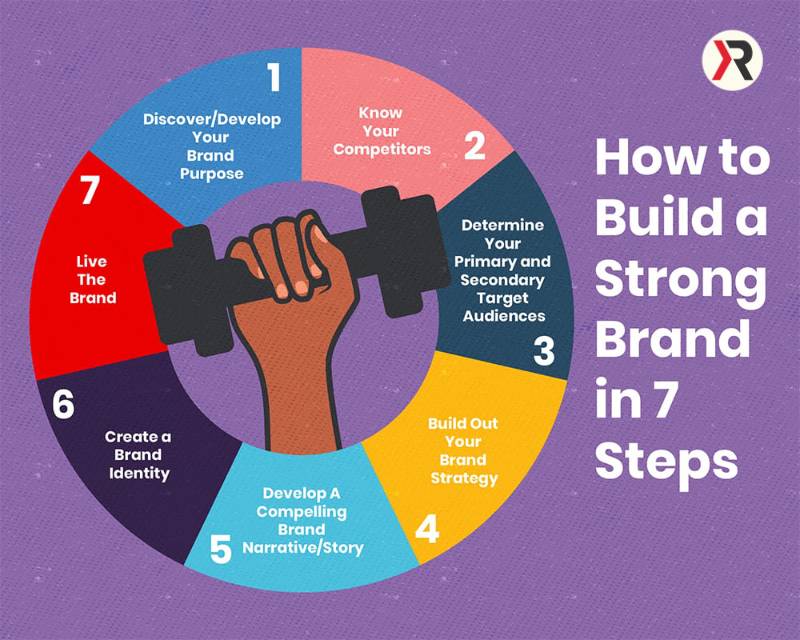
If there’s one thing that’s certain in the design and business worlds, a strong brand identity is required to attract a viewer and then convert them into consumers. Whether you work for a major corporation or are pursuing a side project, the value of having a consistent brand for all of your marketing cannot be underestimated.
A powerful brand should not only help people remember who you are, but it should also express your whole essence, history, and values-all at once.
Why is brand identity so important?
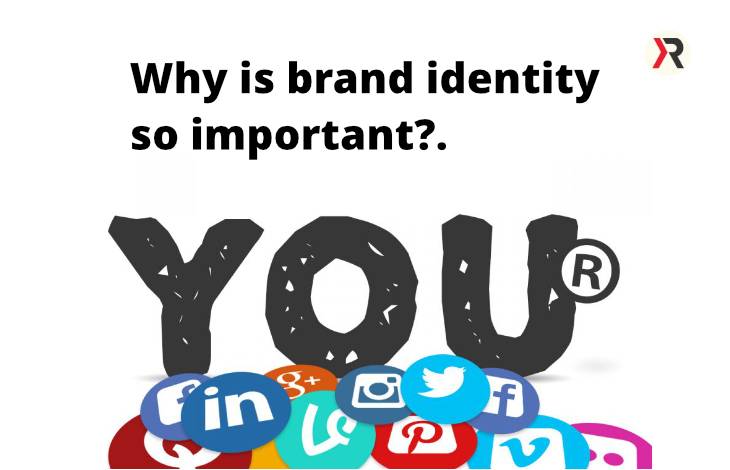
According to Purely Branded, a brand “lives and evolves in the minds and hearts” of consumers as the expression of nearly everything your firm is and does. As a result, its identity is critical to the company’s future.
Customers are far more likely to remember your company if it has a powerful brand identity. A powerful brand name and logo assist in keeping your company at the forefront of your potential customers’ minds.
If a consumer is pleased and confident with your products or services, an influential brand helps to develop customer loyalty throughout your business.
So, what goes into building a perfect brand identity?
This varies depending on your business and the product or service you offer, but in general, brand identity is a mix of the following:
The phrases: specific purpose and positioning, brand name, maintaining a consistent tone and brand voice
The appearance: logo and graphics.
What Are The Elements Of A Strong Brand Identity?
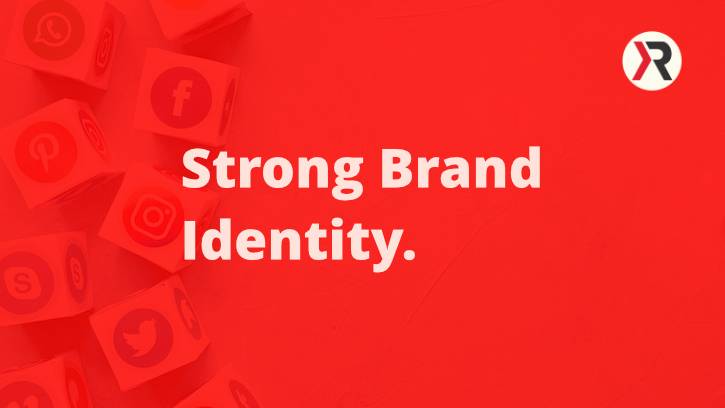
According to acclaimed author Larry Ackerman,
“identity is the cause; the brand is an effect, and the power of the former impacts the strength of the latter.”
We both agree. A well-crafted brand is a strong instrument for increasing your visibility in any industry. This is an excellent quote that exemplifies the difficulty of constructing one.
We’ll teach you how to cover the fundamental aspects of identity to establish a powerful brand. Understanding all the elements improves your chances of developing a consistent and engaging image.
- Name
When naming your firm, you should always go for something basic yet memorable. This implies you should avoid lengthy and difficult-to-spell terms. Always strive for brevity as a general rule.
You may begin by making a list of possible names for your firm by jotting down any words that spring to mind linked to it. It is advisable to keep this brainstorming session to no more than two minutes. This is best accomplished with a team from your organization or individuals you trust.
When you’re finished, start assessing the words and coming up with catchy portmanteaus. Of all, this is only one of many possible ideas for names that you may utilize.
- Slogan
Even the simplest phrase may pique people’s interest. Reading the phrase “just do it” immediately conjures up images of the Nike brand.
A tagline or slogan can assist you in communicating your unique selling point to your target crowd.
To create an attractive statement for your catchphrase, consider why your target customers should believe you or anything that makes you connected to them. Consider your brand’s main benefit and make it stand out.
- Logo
Brand markings can be seen on product labels, business cards, store signs, invoices, and other items.
Logos serve as the public face of your company. It is made up of fundamental design components such as text, colour, space, and artwork.
Depending on how you obtain it, the process of creating a logo can take as little as a few minutes or as long as several months. You may hire a design agency or use an online logo creator to create one. An excellent logo, regardless of the technique, must be simple, flexible, and memorable.
After all, it is the initial picture that your viewer will identify with you.
- Colours
Another important step in creating a brand identity is choosing a colour. It’s best to choose colours associated with your industry and ones that are suitable for your business.
This visual clue helps your target customers associate you with your niche.
For example, a tech company may want to select cool hues such as blue, green, or violet. Alternatively, you could choose colours that have meaning for them by studying the psychology of colour.
- Typography
The font you choose is a message. It matters whether you use serif or sans-serif fonts for your brand marketing collateral.
Beginners should familiarize themselves with serif fonts as elements with a tail-like pattern on each stroke. Traditional companies commonly use it. On the other hand, a san serif font has glyphs that do not have this detail, so they look cleaner.
Regardless of seemingly mundane details like type, consistency can have a significant impact on your business. It is important to maintain consistency with each factor of your identity. Once you have picked your brand typography, you need to apply it to your projects and collateral.
- Design System/Style
Marketing collaterals such as websites, brochures, newsletters, etc., must reflect your brand’s overall style using a brand style guide. Your visual identity and style let the audience know how you are different from your competitors.
Consider Forever 21, a retailer known for its trendy clothes and for providing fast fashion. Throughout the company’s web page, you will see that the brand maintains a modern feel that immediately speaks to young people and teenagers.
Determine what type of brand you want to be. You should decide whether your brand will be minimalist, modern, retro, or something else. The brand assets and supporting graphics you use must always reflect the style you choose. Always remember to keep consistency in mind, by using your brand style guide at every contact point.
What is the best way to create a powerful brand identity Design?
The core of your brand identity design. Creating a brand design Typography Form/Shape of Color Palette Creating a brand identity Product Packaging Logo Website Business cards are used to promote a company.
What is the definition of brand identity?
Let’s get started with a definition. What does it mean to have a brand identity? The collection of all aspects that a firm generates to project the correct image to its customers is known as brand identity. “Brand identity” is not the same as “brand image” or “branding.”
- Strategies for brand awareness
As soon as you are done, it would be best to start considering ways to promote your brand. Could web page platforms be the best option? What about traditional methods such as newspaper ads? Or maybe you can do both?
Depending on your niche, you may choose local partnerships, social website campaigns, guest blogs, and many other options. Make sure that you consider your time, budget, audience, and workforce when choosing a campaign.
Creating A Brand Identity And How To Brand Yourself.
Are you unsure of how to brand yourself? Establishing a brand identity is a crucial first step in brand marketing yourself or your business.
Brand identity is all about displaying your identity and showing your target customers how you relate to them.
You can both attract and influence these coveted customers and clients with the visual elements of your business, such as your logo colours and font, product packaging, and customer experience.
When your company’s brand identity is cohesive and consistent, it is easier for others to recognize and relate to it, develop a powerful brand identity, select the right visuals and relevant content to represent your business, and stay consistent with its style and tone.
Whether you are a freelancer with a website you need to market yourself or a fashion designer launching a new clothing line, building a brand identity should be the first step towards success. Brand identity is vital to taking your career to the next level!
Know Who You Are
Before deciding what physical components will define your brand identity, you must first determine who you are as a brand and define your brand voice.
A few important components make up who you are as a brand:
- What is your mission (what is your “why?”)
- Your values (what beliefs motivate your business?)
- Your brand personality (what type of personality would your brand have if it were a person?)
- Your unique market positioning (how do you set yourself out from the competition?)
- Your brand voice (how would your brand speak if it were a person?)
Determine Your Brand Name And Tagline
You can use your own name if you’re branding yourself as a freelance illustrator or graphic designer! When choosing a brand name for a brand with more than one founder or brand that wants an original name, think about what you wish the brand to accomplish.
Are you looking for straightforward and descriptive content or an eye-catching and inventive one? Use easy-to-spell names and avoid overly long and difficult-to-spell names.
Keep social media and website domains in mind. You’ll need a domain for your website and to claim your brand’s social media accounts.
If you use inconsistent social media handles, you confuse your target audience and make it harder for them to find you. There are tools like Namechk (https://namechk.com/) that will let you know what domains are available or already trademarked across all platforms.
The brainstorming process should not be done alone, especially when start creating a brand. Ask your friends, family, co-workers, and employees for their opinions, and survey as many people as you can.
By playing word association games. You will generate new slogans, taglines, and names that will help you visualize your brand identity.
Economic Benefits Of A Strong Brand
Brands create trust and emotional attachments with consumers. The result of this is that they foster relationships between consumers and products, resulting in these valuable benefits:
- Premium pricing: Consumers pay more for branded products that they feel have better value for money and lower risk than lesser-known alternatives.
- Lower cost of sales: Customers who trust a brand make repeated and frequent purchases. As a result, customer acquisition expenses are carried out throughout the course of a long-term client engagement.
- Lower cost of promotion: Consumers of well-known companies become brand ambassadors, spreading favourable word-of-mouth at no expense to the company.
- Higher market share: Valued brands get loyal consumers who share and refer new customers to the brand, boosting the company’s market share while lowering customer development expenses and strengthening resistance to competitor attacks.
- Lower employee turnover: Great brands attract enthusiastic employees who carry on their excitement to happy customers, making employees’ working more enjoyable and inspired, resulting in lower staff turnover.
- Higher stature: Valued brands have a high degree of recognition and respect in the eyes of customers, industry leaders, community leaders, news editors, finance analysts, and investors, which leads to increased brand preference and market prominence.
Common Mistakes To Avoid
When you’ve nailed down your brand identity, you’re one step closer to superior branding and the next stage of brand strategy.
But not so quickly. You want to double-check your identification to make sure there are no errors.
Don’t be concerned. You will not get everything correctly the first time. Nobody does. Fortunately, there are a few options for you to avoid doing so. In this part, we’ll look at the flaws in which both established and emerging brands make.
Not doing any research on your rivals.
People might get so caught up in establishing a single identity that they neglect to consider other brands.
Getting to know the companies you’re competing with provides you with many benefits in inspiration and creativity. It provides you with information on the characteristics that people seek when deciding which brand to support.
Most essential, it prevents you from choosing the same visual identity as your competitors. This prevents potential clients from mistaking you for another brand and gives you the appearance of being unique.
Track your rivals’ brand identity aspects, as well as their online and physical presence, to see how they present themselves to the target market.
Inconsistency
You may have noticed that we have constantly stressed the significance of consistency while reading this guide.
This is because having an inconsistent identity might be harmful to your business. Can you picture if Apple began branding itself in the same manner that Android does? Or is it the other way around? It would almost certainly change the way Apple fans interact with the brand.
Branding inconsistency, according to an Oxford College of Marketing blog article, “breaks the link that the client forms in their mind between the brand as they know it and the offer they are already viewing.”
This remark illustrates the detrimental consequence of presenting your brand inconsistently. The inconsistency creates distrust and unfulfilled expectations.
You may avoid making this error by displaying your company logo, using your established brand colours and display font on collateral, and maintaining your brand tone.
Trying to reach out to everyone.
According to HavasGroup market research from 2019.
77 per cent of consumers favour companies that share their beliefs.
It is essential to consider that not all human beings have the same ideals.
It would be best if you were cautious in selecting the individuals with whom you wish to connect because seeking to appeal to everyone will result in you appealing to no one.
Study the demographics of your target audience.
Assess their fashion sense, age, culture, and other related interests. You may then determine what interests them. Would they prefer a more serious or a more creative design?
This information may be used to create images and other brand visual elements that will connect to them.
7 Indicators That Your Brand Needs An Update Or Rebranding
Times change, businesses change, customer preferences change, culture changes, and brands must occasionally evolve. If your brand is subjected to one or more of the following occurrences, its strength may be jeopardized, and a brand refresh may be in order:
- Significant business changes
- Significant market developments
- Ownership or leadership turnover
- Expansion of the market or product line in a short period of time
- Diversification of major products, channels, or strategies
- A merger or acquisition
- A brand identity that is out of rhythm with the current market, cultural, and society’s tastes, mood and interests
How Your Brand Affects Your Target Audience And Market
Brand Identity And The Halo Effect
Companies with a strong brand identity have a competitive advantage among others. Customers often favour a product line because they have had positive experiences with other products from the company.
The “halo effect” phenomenon is correlated to brand strength, brand loyalty and helps build brand equity.
When consumers choose your company’s products or services because you’ve established influential brand identity, you improve your brand image and brand recognition.
The halo effect supports brand development and enhances mindshare (a marketing term that describes the amount of brand awareness or popularity surrounding a product, service, or company).
Remember, whether you actively build strong brand identity or disregard it, you still impression consumers and prospects.
Brand Identity And The Horn Effect.
In fact, the halo effect’s opposite is the horn effect (named for the devil’s horns). When people have an unfavourable experience, they correlate that negative experience with everything associated with that brand.
This occurs, for example, when an otherwise powerful brand does a poor job managing customer expectations and complaints. Brand loyalty is negatively affected.
Your brand needs to be proactive and deliberate in shaping how future customers perceive it and the products and services that it offers. Managing your brand is important.
Brand identity cannot be left to chance, so you lose your ability to shape conversations about your brand.
The difference between a brand, branding, and brand identity
In business, your brand is how others perceive you. It’s how you connect emotionally with your audience.
Branding refers to the actions you take to establish your brand. Branding, and brand strategy, is a process that you follow to influence other people’s perceptions of your business.
The visual representation of your brand and the visual portion of the branding process is your brand identity.
Contact the One-Stop Digital Agency to Assist You in Succeeding
Are you interested in marketing your brand? Red Kite SEO provides a comprehensive digital media marketing platform that lays the solid foundation for overall brand identity and affinity for local businesses.
Our company’s mission to clients is to place you at the top of your industry and in your service location.

Brand, Position And Revenue
Large corporations frequently have a powerful brand identity that people flock to because the brand has developed a trust bubble over time.
However, as a former employee of one of the largest firms in the private home services market, I witnessed a lack of consumer value and quality.
A regular and robust marketing presence helped the company maintain a “we take care of you” image connected with the public.
In our opinion, small businesses offer customers quality and value. Building a good brand, positioning your business and placing you at the top are the keys to generating more revenue, and that is what Red Kite SEO specializes in.
Digital Marketing To Support Small Businesses.

Each business is different, so there is no set formula for digital marketing. Their services and how they approach and strategy, their goals, and their objectives differ from business to business.
That is why Red Kite SEO works particularly with small local businesses to offer a platform for them to fight against strong local rivals.
With our bespoke digital marketing services, we deliver a tailored solution to push your business forward. We would be pleased to discuss how we can help your brand online and offer the services you need.
Don’t hesitate to get in touch with us now using our website’s contact form. If you want more information about branding for your business, read our How to Build a Brand in 9 Easy Steps.
